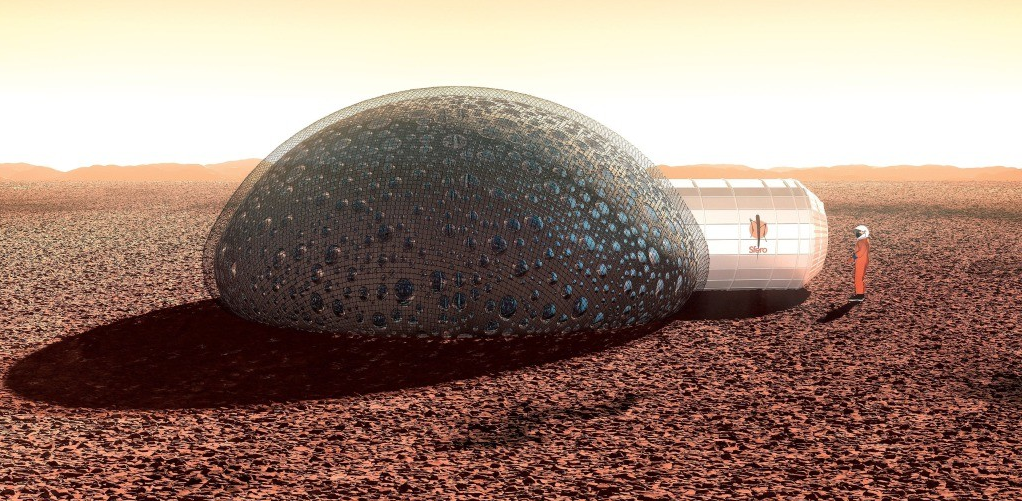
Because of tests run by the small population of rovers already roaming the surface of Mars, we know that the planet’s red coloring is thanks to rust present on the high density of iron oxide in the soil. Fabulous wants to leverage the presence of so much iron and use it as the raw material to construct the Sfero pods. Mars also has a lot more water than many of us may be aware; NASA estimates that the 1.5% to 3% of water stored in permafrost deep in the soil, can easily be liquefied using basic condensation methods. Not only can the water help support human life, it can be used to water plant materials for the production of food and oxygen as well as acting as an insulating material for the habitat itself.
The water would be stored in a pocket between the Sfero pod’s two iron hulls. Not only is this a smart storage option, but water also acts as an excellent barrier between humans and deadly solar radiation not screened out by the thin Martian atmosphere. Fabulous also says that it can act as a permanent psychological reminder of the planet Earth. It would almost, they say, represent a protective amniotic fluid for the red planet’s new residents.
The Sfero robots start as a long, pole-like robot that will be embedded several meters down into the surface of Mars–deep enough to extract water from the soil and an abundant source of raw materials to construct the habitat hulls. The robot has two autonomous arms to help it in the construction process. The first arm is used to harvest the iron materials in the soil, while the second is equipped with a metal 3D printer that will convert the raw iron into metal powder to be melted together with a high-powered laser. The printer will start by using the iron to build a solid foundation, and then begin the fabrication of the outer and inner hulls. Each hull will have a spherical shape with an internal honeycomb structure, making it both stronger and highly resistant to the pressure differentials between the surface of the planet and the livable atmosphere inside of Sfero.
The robot 3D printer is also capable of constructing all of the habitat furnishings, including floors, walls, beds and chairs. It can also create different types of internal structures, so specialized Sfero structures can be made for different purposes, like living quarters, research areas or domes specializing in growing plants for food and oxygen. With a few dozen Sfero robots, an entire colony can theoretically be self-constructed on Mars with very little human involvement. The design also suits itself for Earth-based testing in areas with similar soil compositions like the volcanic areas in Hawaii and parts of the Mojave Desert in California.
It isn’t clear if NASA will consider or even see the Sfero habitat, which is probably why it was released publicly, but it’s a pretty great and clever idea. The main challenge as I see it lays in the metal 3D printer attached to the robot arm, as most metal 3D printers require specific vacuum conditions to function properly. While Mars is far from a breathable atmosphere, it is much further from being a vacuum. But as an idea it’s a pretty great one, and if it could be tested, and alternately used, on Earth, then we could potentially see some Sfero pods available as livable homes here on Earth.
Do you think that 3D printing will eventually help humans colonize Mars? Discuss in the 3D Printing and Mars forum thread on 3DPB.com.
